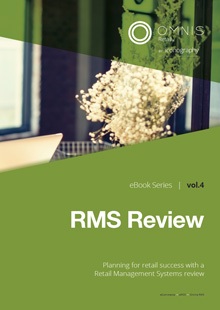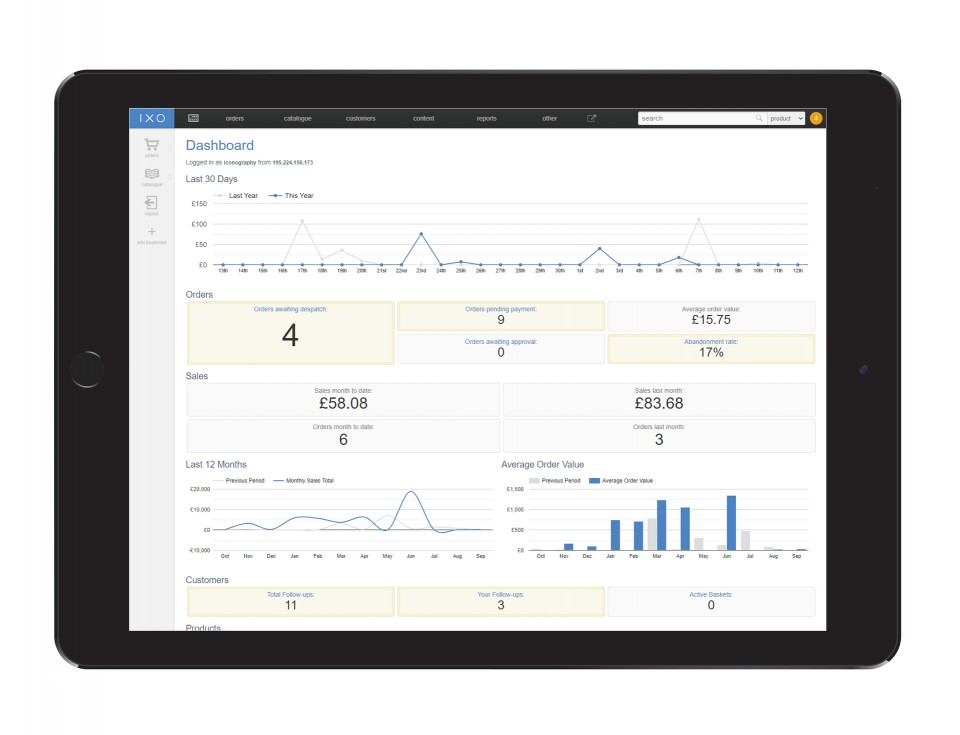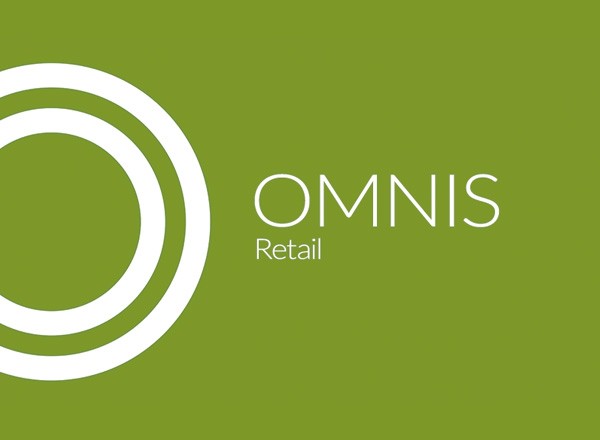10 retail KPI metrics your RMS should be providing
Does your RMS work for you?
In the increasingly disrupted and competitive world of retail, it’s more important than ever to collect and analyse the right information to help your business grow. It’s not just enough to know which retail KPIs and metrics you should be tracking, you must have the systems in place that allow you to track and report on key stats in real-time. These 10 retail KPI metrics should be a key part of the dashboard in your retail management software (RMS).
Retail Management Systems have supported retail for decades, but traditional software has been very disconnected. Modern solutions provide a lot more data, in a much more accessible manner, so don't get caught out with a steam powered system.
RMS from Iconography
Did you know that our Unified Commerce platform mixes eCommerce, RMS, CRM and EPoS?
OMNIS Retail is an award winning platform with a single database handling customer data, stock management, purchase ordering and much more.
A good RMS should make your life better - a bad one will make it worse.
Are you choosing a new Retail Management System?
Finding the right RMS for you is not an easy task; with so many software vendors to choose from, it's important to find the right solution for you and your business.

Choosing the best Retail Management System
Make sure you and your business aren't being held back by a terrible solution - if it isn't performing, change it!
What are the key KPI metrics?
How do you know what you're looking for when you're shopping for a new Retail Management System? We've created a list of the ten most important KPIs that businesses should measure their RMS against.
Overall sales
Knowing what you're selling is the cornerstone of business intelligence.
Read MoreMarketplace sales
Omnichannel reporting is needed if you sell on Amazon or eBay.
Read MoreIndividual store sales
Immediately see profitability and viability of every location.
Read MoreSales by store assistant
For when you track performance or calculate commission.
Read MoreTop selling products
Have visibility over your top sellers and use it to inform purchase ordering.
Read MoreTop customers
Combine your CRM and RMS for a true single view of the customer.
Read MoreLoyalty points
Run loyalty schemes and review participation across all channels.
Read MoreReturn rate and return details
Which products are being returned and how frequently?
Read MoreSupplier performance
Do you know if your suppliers are letting you and your customers down?
Read MoreeCommerce Conversion Rate
Traditional RMS can't handle sales from multiple channels - can yours?
Read MoreThe right RMS gives you complete control of your business
Overall sales (plus sales by channel)
It goes without saying that a core metric you must be able to report on using your retail management software is overall sales. However, for some retailers pulling this information from their system is not as easy as it should be.
Due to the way most retailers have set up their retail systems in silos, pulling together an up to date and comprehensive sales report is a challenge. Some systems may be used for single channels such as eCommerce or instore. This means data needs to be extracted from different systems and then combined to produce a comprehensive report.
If this sounds like a setup you currently have in your business it might be time to review a Unified Commerce solution which is one system that powers your in-store, online, inventory and orders. This makes reporting on sales much quicker, simpler and enables better data-driven decision making.
Marketplace sales
Many retailers not only sell through their own online channels, but they also sell through third party marketplaces. This can be for many reasons including to increase brand awareness, to sell older stock or just to expand their distribution channels.
These online marketplaces will have their own in built sales reporting features. However, much like gathering sales data from different channels, extracting data from marketplaces can cause a reporting lag, especially if reports are generated at different frequencies to other systems. For this reason, your RMS should allow you to pull in your marketplace sales data and combine it into one report with your other sales channels.
Individual store sales
Retailers operating with multiple stores must be able to review the sales performance of individual stores in the estate. This is critical for forecasting demand so that the correct stock can be sent and support given to underperforming stores.
If you have one system that is used across all of your stores it’s likely that you will be able to segment sales data by store. For retailers looking to take this one step further, you could consider a solution that automates the purchase order process for each store based on their sales so you know that they will never run out of stock at peak times.
Sales by store assistant
Tracking sales by store assistant can be an incredibly useful metric to understand if stores are over or understaffed and which employees are the highest performers. Your RMS should allow you to create separate log-ins for each employee that tracks the sales they make throughout the day as well as the products sold and the times they sold them.
Collecting this data can help to give a serious boost to your in-store sales as well as saving you money on operating costs. A platform with a good reporting feature in this area will allow you to analyse and plan for how many staff need to be in at certain times and which staff are best suited to working your busiest and slowest periods.
Top selling products
Having visibility on your best (and worst) selling products is essential for successful retail and your retail management software is the place to collect and review this information. It will also give you the flexibility to allocate stock to your best performing stores and sales channels.
Much like sales reporting, generating reports on product performance can be tough if different systems are being used for different channels. Ideally, you want a solution that will pool your critical retail KPIs into one comprehensive dashboard that you can then use to create snapshot reports. Real time insights will enable you to deliver better performance.
Top customers
Another metric that you might not expect to find in an older RMS is information on top customers. This information is usually held in a separate customer relationship management (CRM) system which will have its own set of reporting features.
Modern Unified Commerce solutions incorporate CRM into the overall solution meaning reports on sales, products, inventory and customers can all be accessed in one place using the cloud. The advantage of this is that whether your top customers choose to shop online or instore you will always have instant access to their information which can support delivering targeted and personalised offers to increase loyalty and average spend.
Redeemed promotions and loyalty points
Promotions and loyalty schemes can be difficult to set-up and run successfully, especially across multiple channels. For retailers that are running loyalty schemes and promotions, being able to report on their success quickly and easily is a must, especially if you plan to optimise the campaign as it’s happening.
A good RMS will be able to provide you with this data in real-time for every channel. Older systems aren’t set-up for this type of reporting and those relying on integrations with other systems are often slow to return information. Integrations can also fail, meaning no data is provided at all. This is something to be aware of if you require real-time updates on promotional activity.
Return rate and return details
As a basic requirement your RMS should allow you to handle returns from your customers, regardless of the channel they bought it from and the channel they are returning it to. In addition, running reports on those returns that allow you to see which products, channels and stores have the highest return rates is essential.
Reporting on returns can have many benefits to a business. It can highlight issues with certain product lines, suppliers and stores. For eCommerce retailers, it can help you to identify product descriptions that are inaccurate and images that need updating that might be confusing or misleading customers.
Supplier performance management
Ideally, your RMS should incorporate a comprehensive inventory management solution that allows you to track stock, deliveries and warehouse locations. Doing so will enable you to run reports on suppliers to ensure they are meeting the standards you expect.
Some of the common reports you should expect to find might be:
- Delivery Times - Are deliveries from suppliers generally on time or late?
- Delivery Accuracy - Are deliveries accurate or do they contain errors?
- Delivery Frequency - How often is stock delivered and can it be optimised?
- Pricing - What is the cost of your products over time?
eCommerce Conversion Rate
Typically this retail KPI would not be included within an RMS as many eCommerce websites either have their own reporting features or use a third-party platform like Google Analytics. That being said, eCommerce conversion rate is still a key metric to measure to determine retail performance.
The reason we’ve included this metric is because, in modern Unified Commerce retail systems, eCommerce is integral to the solution. This means that it’s powered from the same database that powers in-store EPoS, your inventory and CRM and so eCommerce metrics can be accessed and reported directly with the retail management system. The advantage of this is that data can be accessed quickly and in real-time from every channel powering faster and better-informed decision making.
If you feel that your existing RMS is lacking the key functionality around reporting that will support your retail growth then we have the solution. OMNIS is a new breed of RMS that’s called Unified Commerce, a cloud-based software solution that combines CRM, eCommerce, a suite of retail management functionality including inventory management, warehouse management and reporting and EPoS in one system which are all updated from a single central database.
OMNIS was born out of the needs of a leading direct to consumer brand to support their online and instore retailing formats in the UK market. They were facing the same problems and challenges that present obstacles for any retailer.
As a progressive and forwarding thinking brand, our client wanted to remove the limitations, constraints and operational inefficiencies associated with integrating an eCommerce website with offline EPoS and legacy back office retail software.
In OMNIS you can create multiple warehouses with any number of locations, place purchase orders and complete stock transfers. We have a full range of reporting and administrative control suite. Together, these give you complete control and oversight over your stock across all channels.
Request a Demo

Online and instore retail
OMNIS Retail is a pioneering new retail solution that has been driven by D2C brands & niche retailers looking to the future. A single database eliminates any data integration issues between outdated systems, instead providing a cloud-based omnicommerce retail solution fit for the 21st century.
The team were always able to answer any questions we had and any issues we come up against were resolved
Craig Silvain, BM Steel
Get in Touch